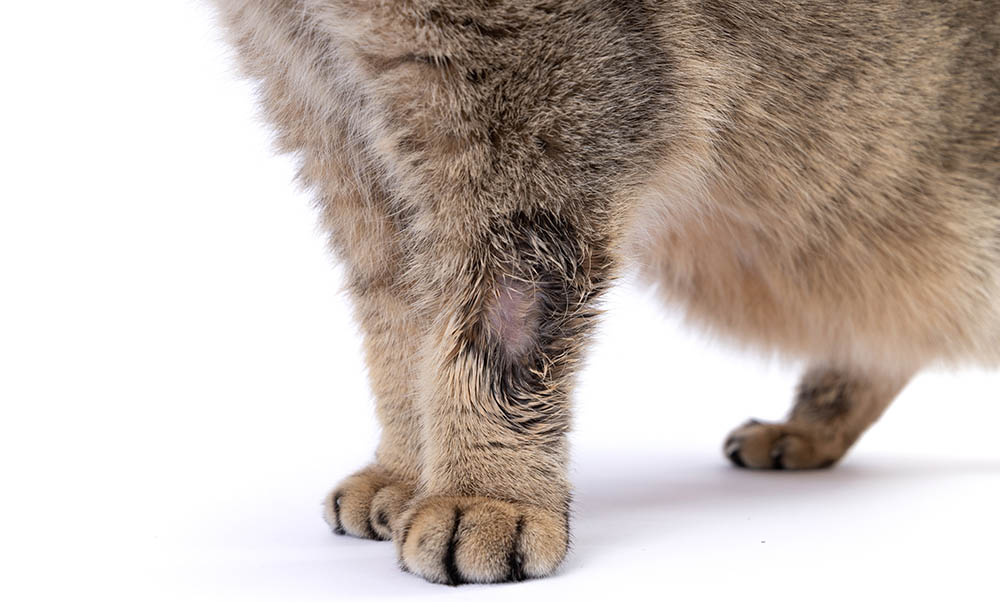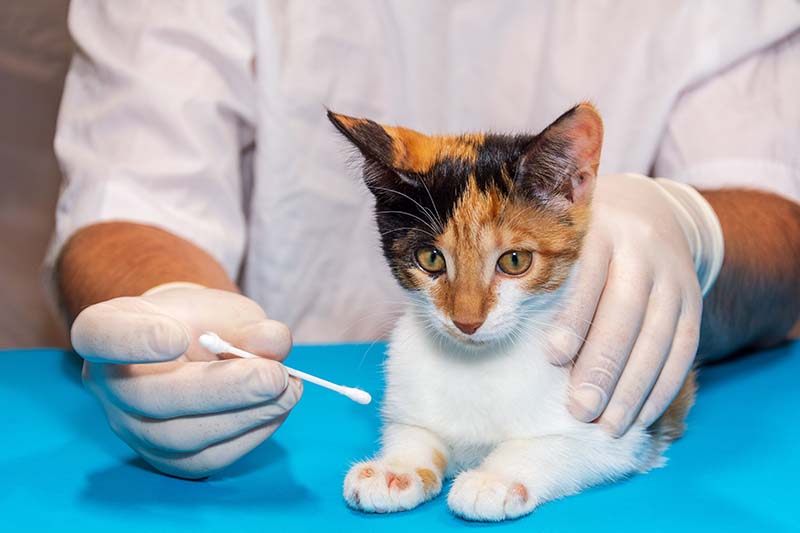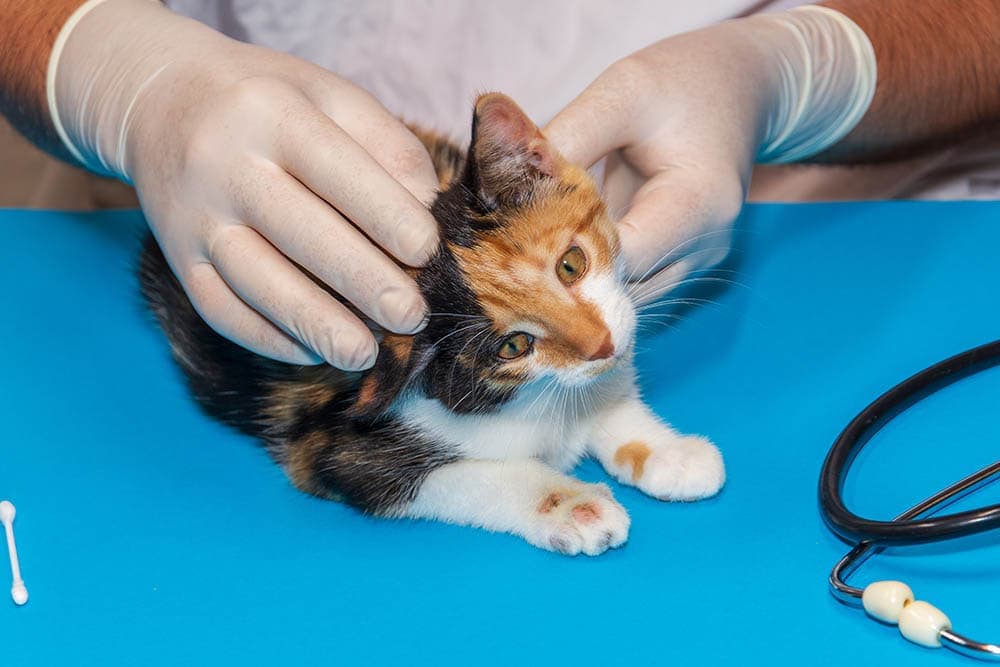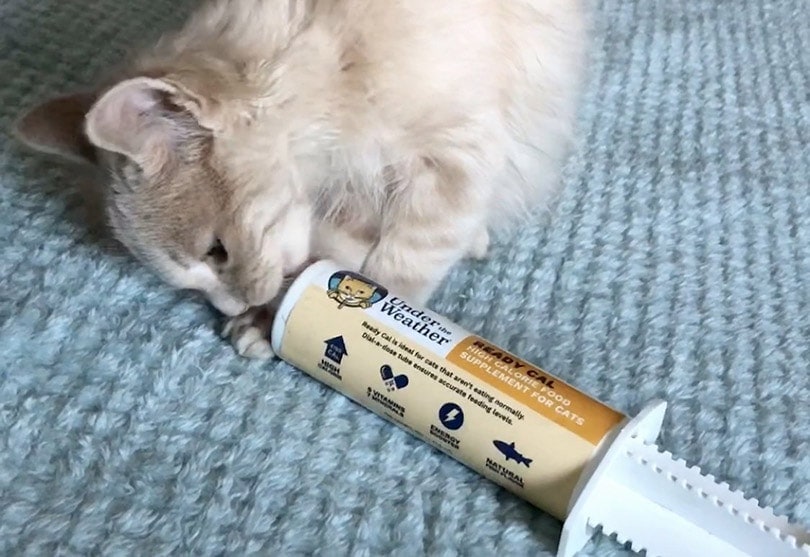How Long Should I Quarantine a Cat With Ringworm? Vet Approved Facts & FAQ
By Ashley Bates
Updated on

If your cat has made their trip to the vet and been diagnosed with ringworm, treatment has likely already begun. But because this fungal infection is contagious, you want to protect other felines in the home.
In many cases, your vet may recommend you quarantine the infected cat until you can determine if the ringworm has spread. Generally, quarantine time after a ringworm diagnosis is 2 to 4 weeks for cats. This gives time for the medicine to work and the infection to pass without infecting other animals or people in the home.
Here is all the info you need to keep your cat safely separated until they’re better.
Quarantine Time for Affected Cats
Since ringworm is not species-specific, it can quickly spread throughout the household. To avoid children, other pets, or even yourself getting it, it is crucial to keep your cat in a separate area until the infection clears up.
It is essential to make sure that your cat is comfortable during their healing process. If you limit them to one area of the home, make sure it has all of their favorites to keep them busy. A full food bowl, clean water, a disposable bed, and toys are a must.
Most cats will get lonely during this time, not understanding why they’re being restricted. As long as you give them plenty to do and nourishing food to eat, it’ll be over before they know it.
In the meantime, it’s important to look out for signs of ringworm in other pets and people while you wait.

How to Identify Ringworm in Cats
Ringworm can sometimes go undetected, but it usually causes visual signs. For cats, their thick fur can hide a ringworm infection, which lends more time for it to spread before detection.
Signs of ringworm include:
- Alopecia (hair loss)
- Skin scabs or redness
- Dry, flaky skin
- Crusty areas of skin
If you notice these signs, it’s time to get them to your veterinarian for a thorough examination. Ringworm is not the only perpetrator of hair loss in cats, so it’s essential to get to the underlying cause.
Long-haired cats can be much more challenging to detect because they often don’t suffer the same effects as other cats. Hair loss can be more difficult to detect since most of their bodies are completely covered in lustrous locks and it can be hard to see the skin.
Other reasons for hair loss in cats include:
- Allergies
- Hyperthyroidism
- Fleas
- Medication reactions
How Contagious Is Ringworm for Cats?
Ringworm is very contagious and can transfer to people, cats, and dogs. So, it’s vital to contain the fungal infection as quickly as possible to prevent spreading. You can get ringworms from living in the same communal spaces, bringing the fungus from surfaces and other shared home areas.
Ringworm can spread through contaminated objects and surfaces like furniture, bedding, carpet, and anywhere else your cat dwells for up to 18 months. That is why it is so important to thoroughly clean your home to ensure you’re getting rid of any fungal spores that could transmit the infection.
Thoroughly cleanse your cat’s grooming tools, such as their brushes, towels, toys, bedding, and frequent napping spots.
Ringworm symptoms usually appear between 4 and 14 days after contact. Because cats have fur, it can take a long time to detect, making it difficult to get a handle on it early.

How Is Ringworm Diagnosed?
Sometimes, feline ringworm can undergo a special ultraviolet lamp that shows the infection in yellow-green fluorescence. However, this is not effective in all cases.
Your veterinarian will most accurately use culture to obtain the fungus and observe it in a laboratory setting. They might scrape areas of the skin and hair to undergo further testing.
How Is Ringworm Treated in Cats?
After ringworm is detected, it is typically treated with ointment, topical cream, medicated shampoo, or oral medication. The infection is treated aggressively and requires a household effort to keep it at bay.
Over-the-Counter Shampoo for Ringworm in Cats
Certain antifungal medicinal shampoos on the market can treat ringworm. To eliminate the issue, your vet might also suggest medicated shampoos that kill fungus. You can generally bathe your cat twice a week during the first 2 to 3 weeks.
You can buy medicated shampoos over the counter in pet shops or on pet sites. Or, depending on the severity, your vet might prescribe a prescription-strength medicated shampoo instead.
Conclusion
The amount of time you quarantine your cat will vary slightly depending on the severity of the infection. It would help if you always got an exact estimate from your veterinarian based on your cat’s individual case.
As your cat is being quarantined, it’s important to check over the remaining pets and people in your home to ensure the infection hasn’t spread to another party. If you notice signs of ringworm in yourself, you must get to your doctor for an examination and proper treatment.
Featured Image Credit: Nadya Bessonov, Shutterstock












